Abstract
Petrous bone cholesteatoma is a rare pathologic entity and may be a difficult surgical challenge because of potential involvement of the facial nerve, carotid artery, dura mater, otic capsule, and risk of cerebrospinal fluid leak. The objective of this article is to present a personal classification of petrous bone cholesteatomas, a survey of recent surgical attitudes, and our present surgical strategy based on our experience with 54 operations between 1978 and 1990. Radical petromastoid exenteration with marsupialization and the middle cranial fossa approach were used only for small pure infra- or supralabyrinthine cholesteatomas, respectively. The enlarged transcochlear approach with closure of the external auditory canal was used for infralabyrinthine, infralabyrinthine-apical, and massive petrous bone cholesteatomas. Five cases with petrous bone cholesteatomas in different locations are described in detail to present the signs and symptoms together with the management.
Full text
PDF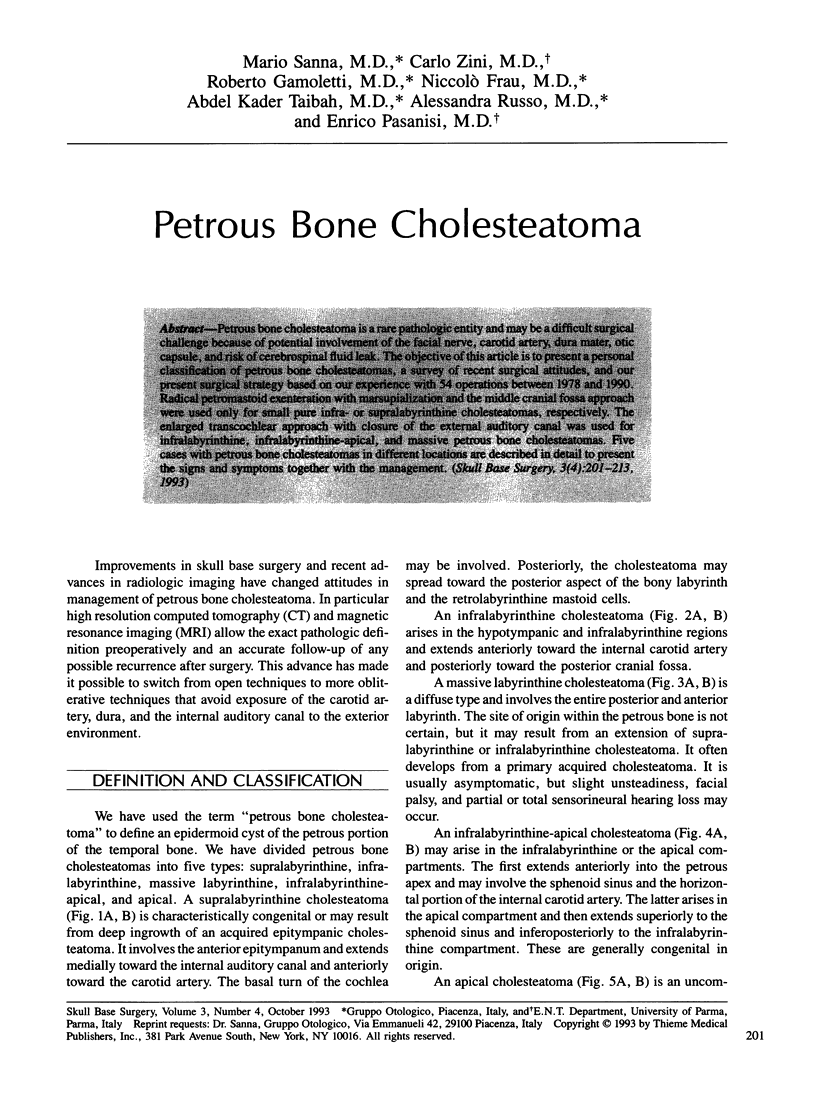
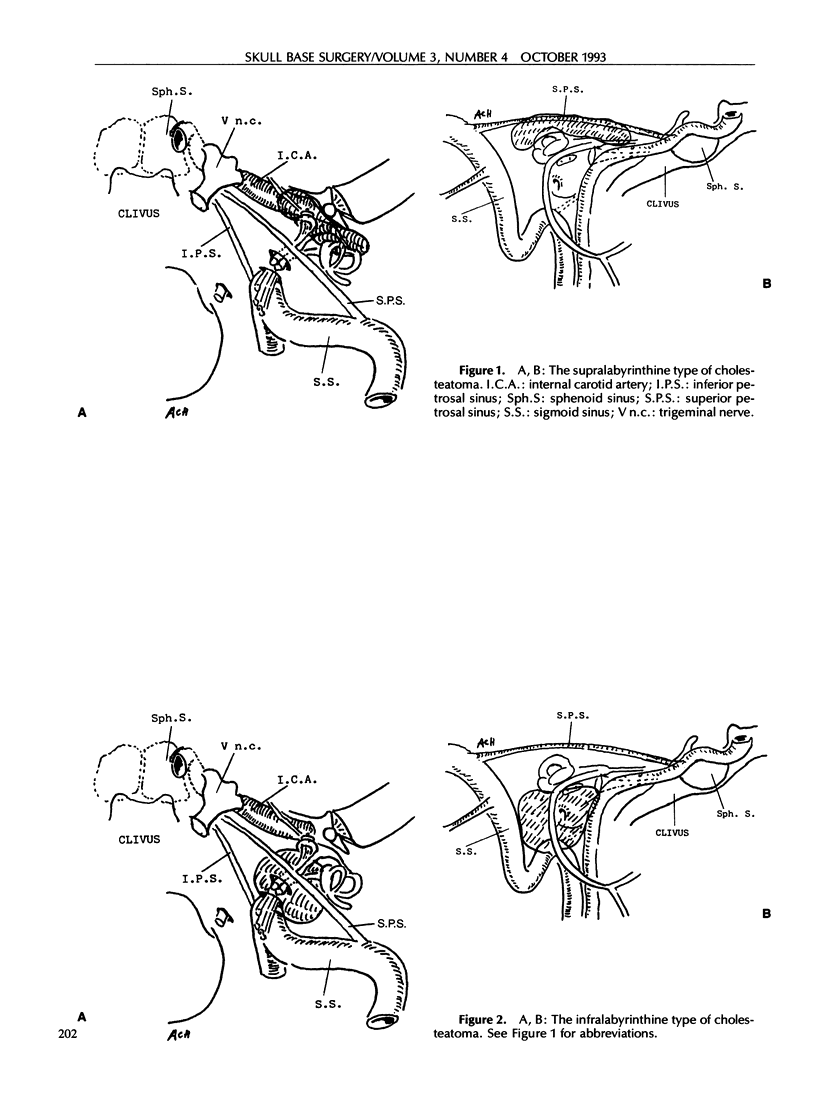
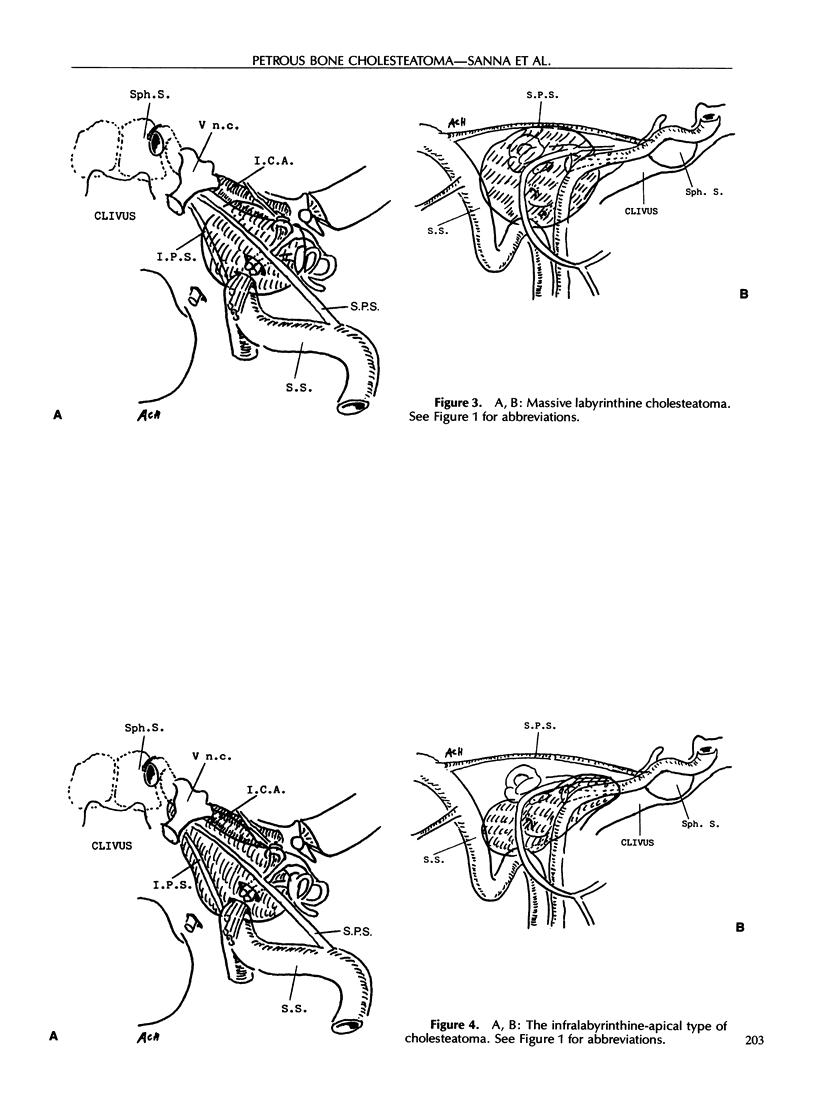
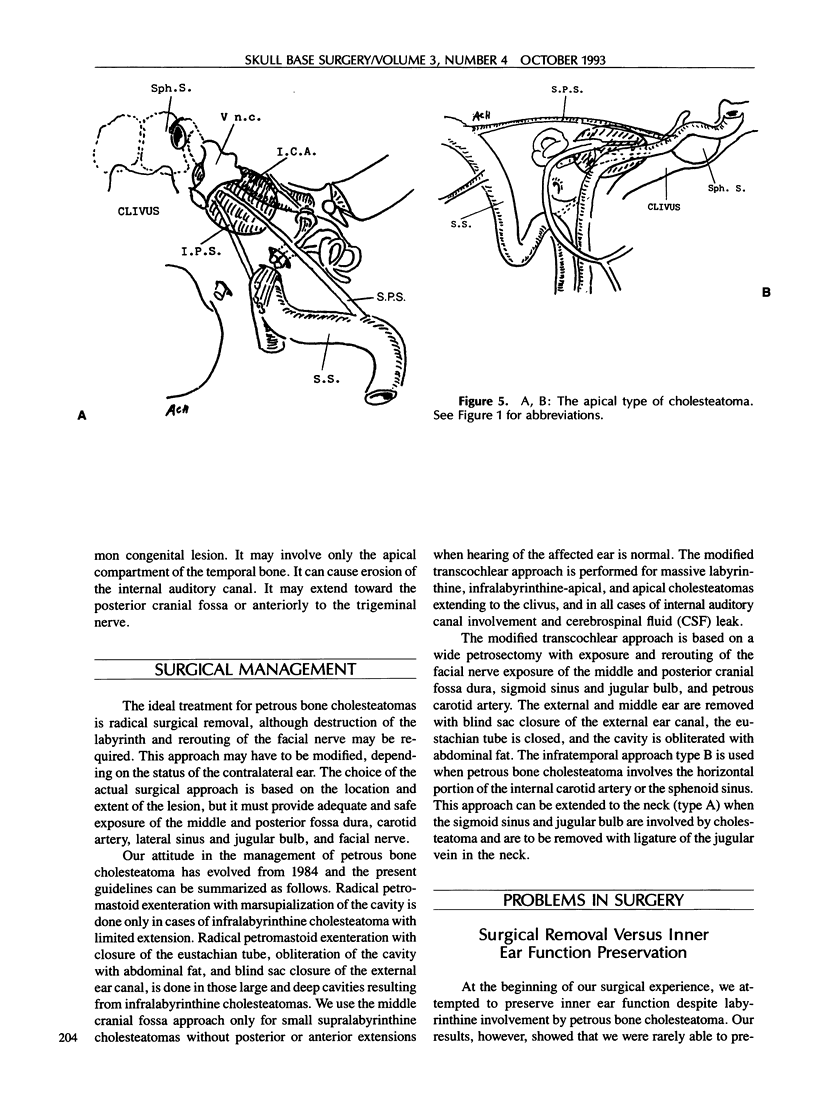
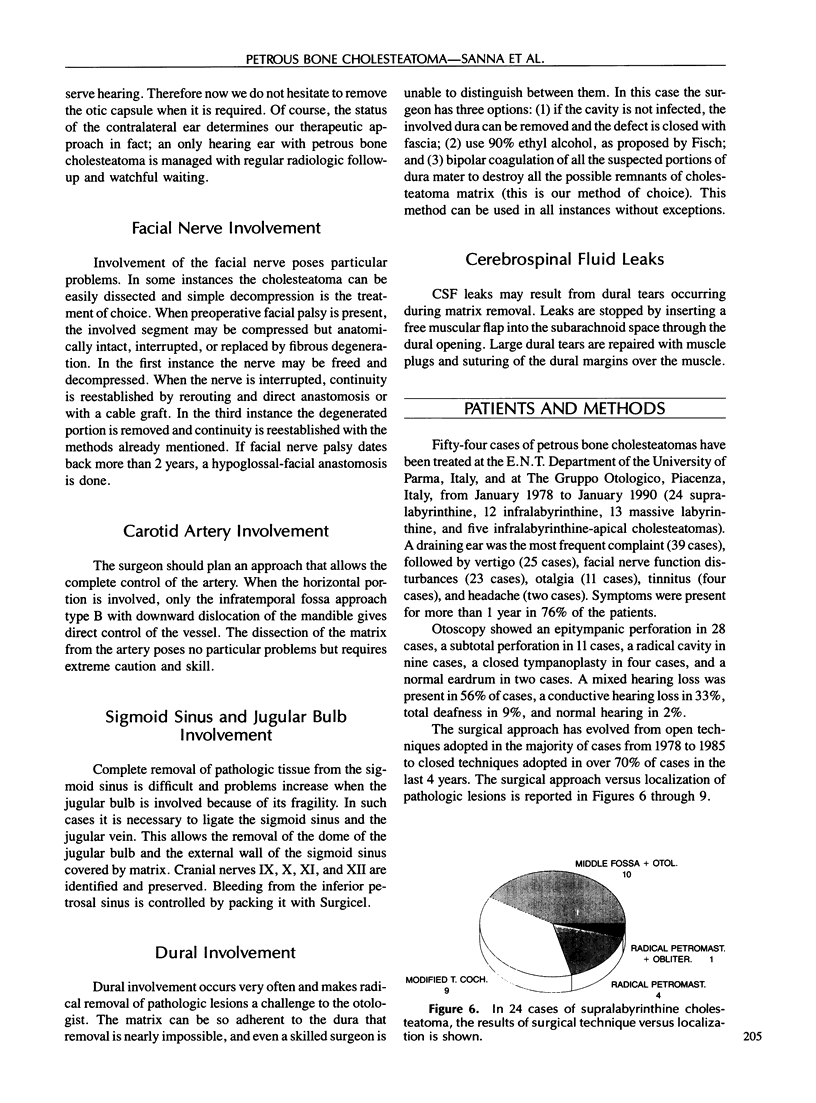
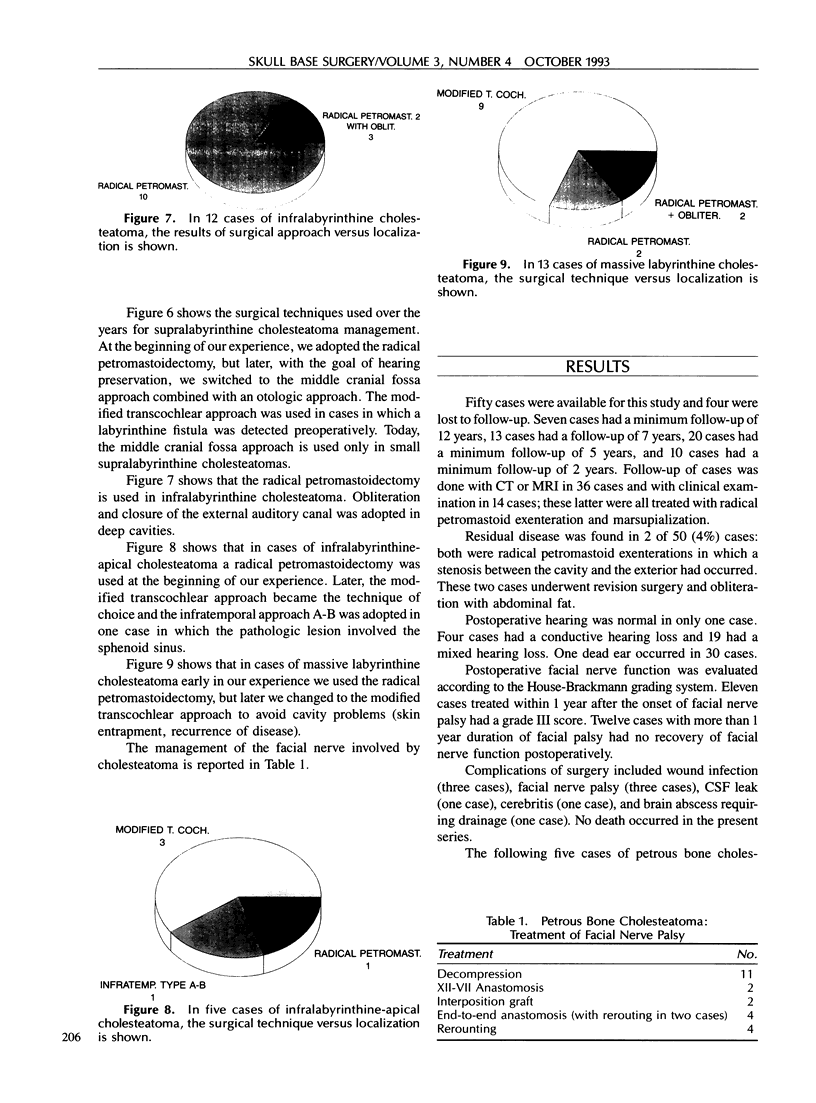
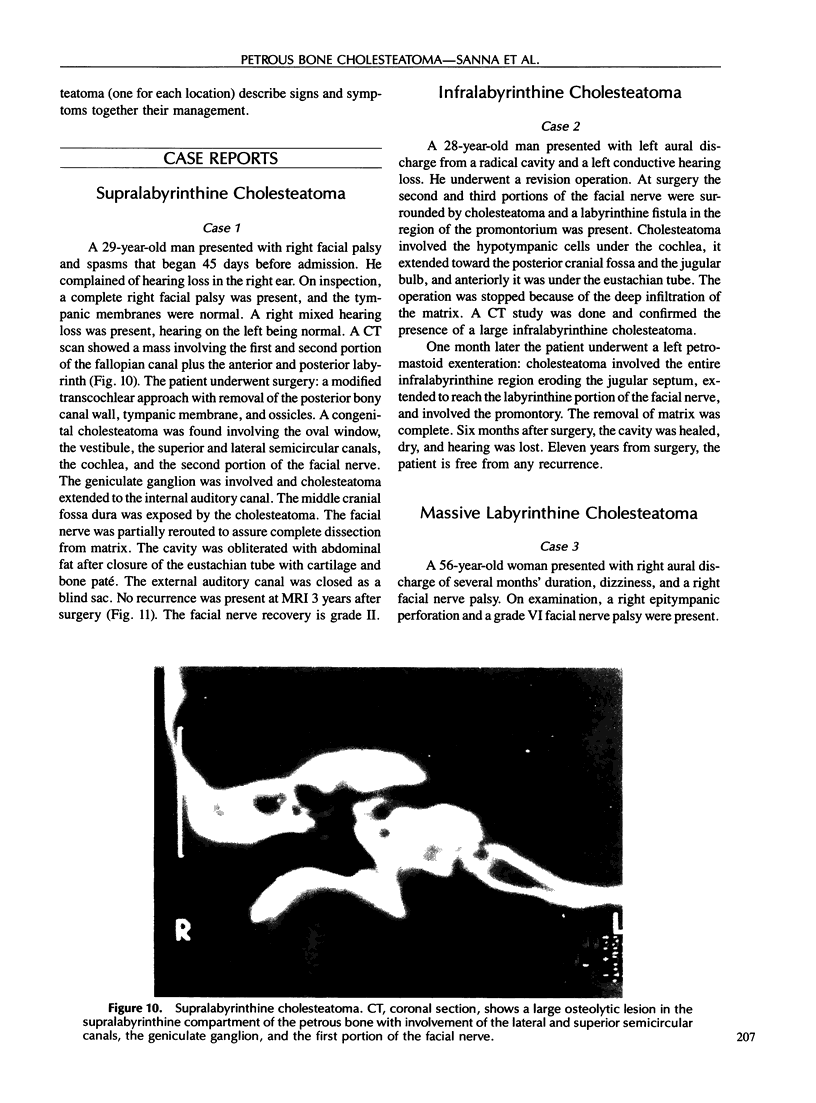
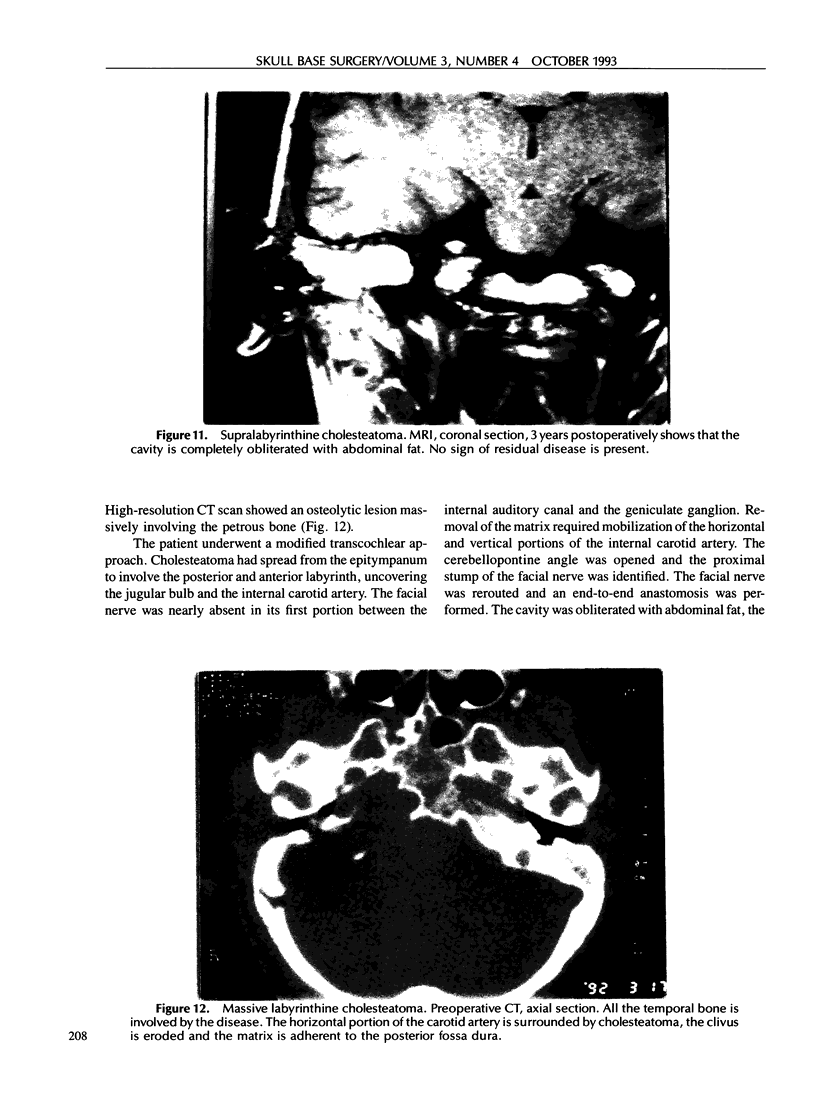
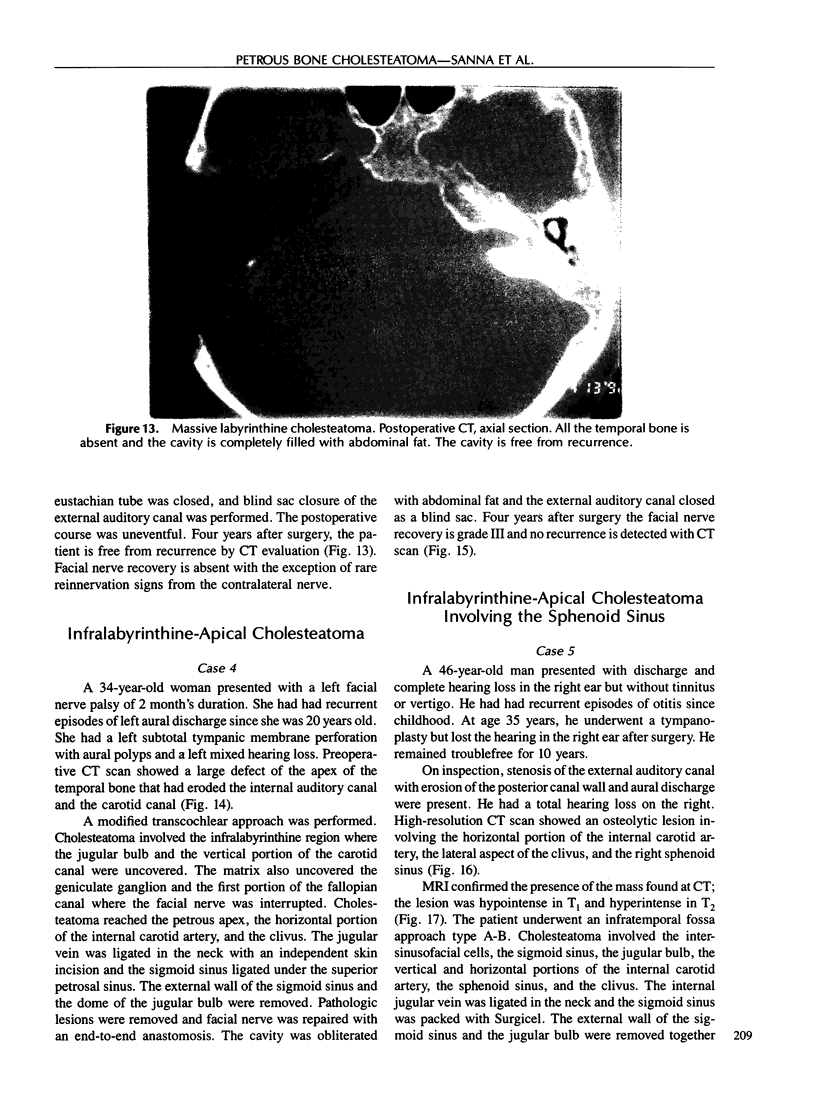
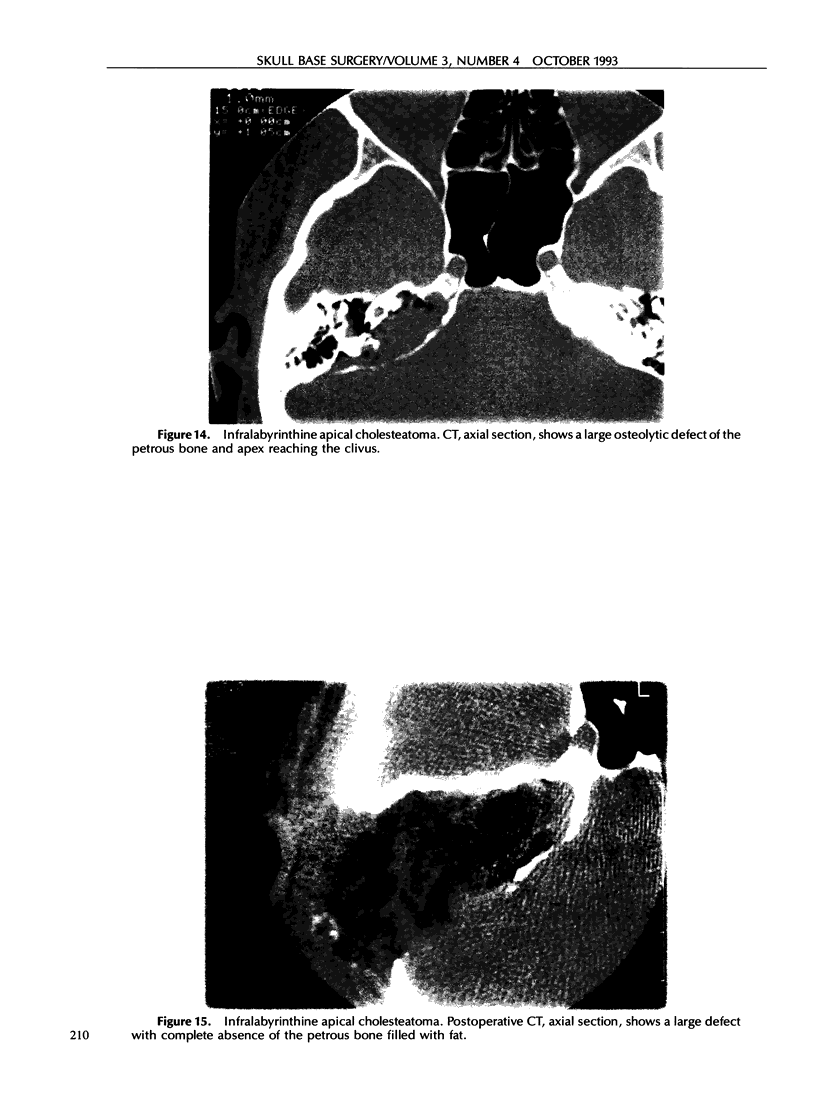
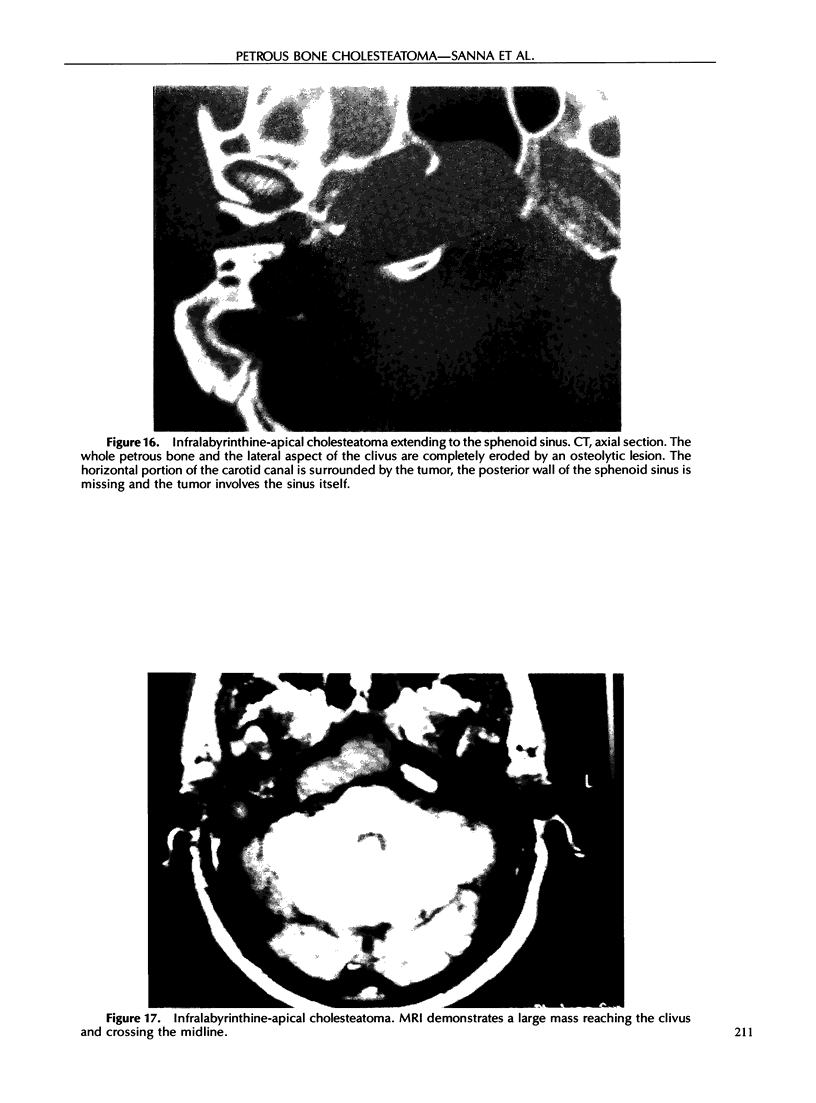
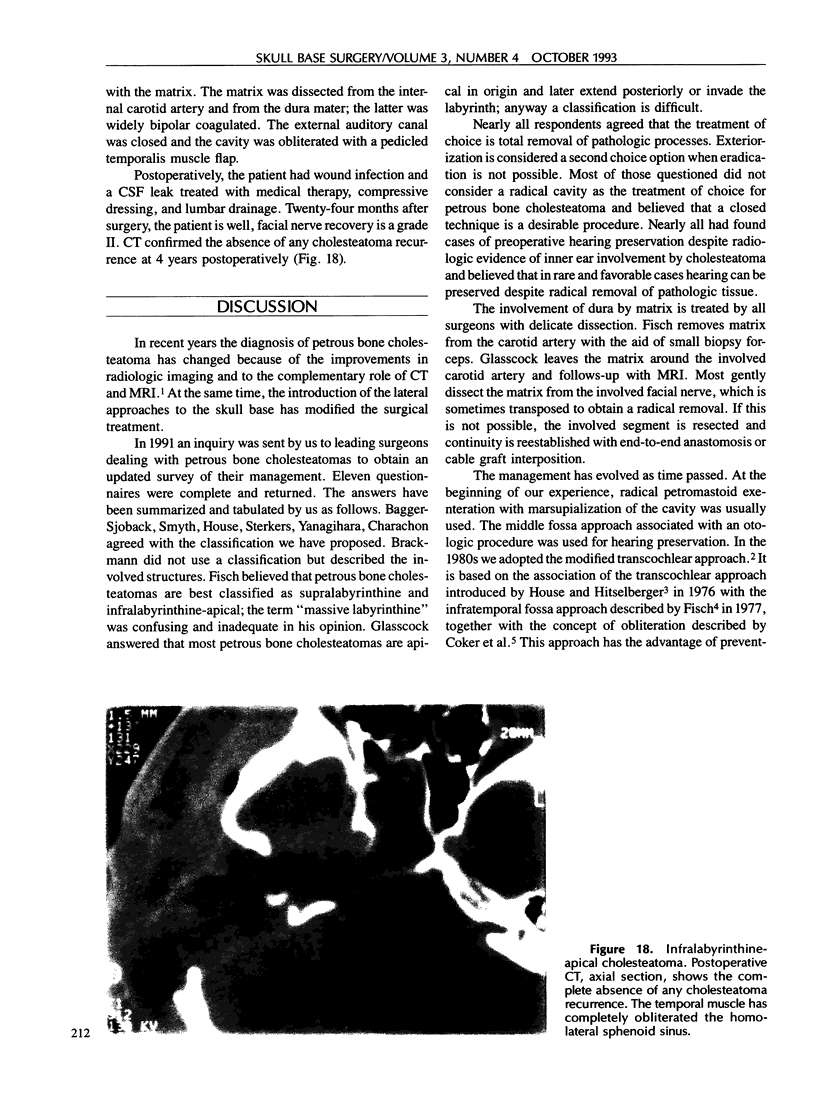
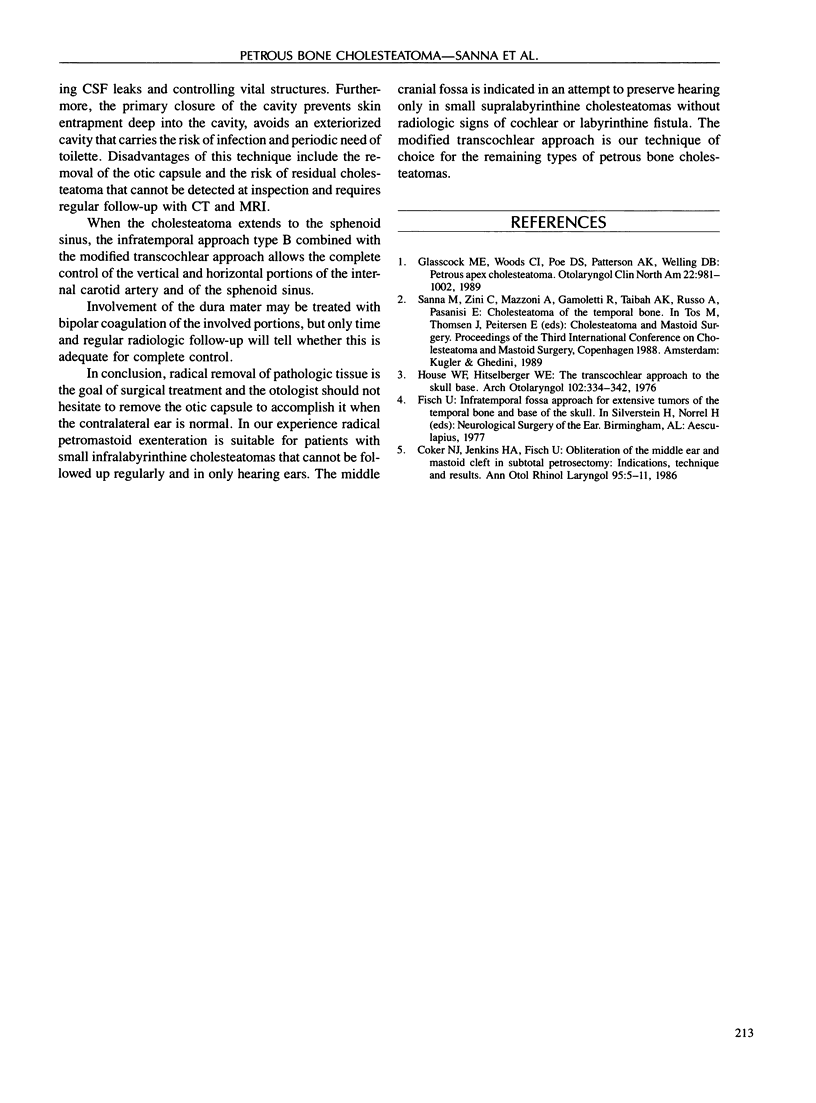
Images in this article
Selected References
These references are in PubMed. This may not be the complete list of references from this article.
- Coker N. J., Jenkins H. A., Fisch U. Obliteration of the middle ear and mastoid cleft in subtotal petrosectomy: indications, technique, and results. Ann Otol Rhinol Laryngol. 1986 Jan-Feb;95(1 Pt 1):5–11. doi: 10.1177/000348948609500102. [DOI] [PubMed] [Google Scholar]
- Glasscock M. E., 3rd, Woods C. I., 3rd, Poe D. S., Patterson A. K., Welling D. B. Petrous apex cholesteatoma. Otolaryngol Clin North Am. 1989 Oct;22(5):981–1002. [PubMed] [Google Scholar]
- House W. F., Hitselberger W. E. The transcochlear approach to the skull base. Arch Otolaryngol. 1976 Jun;102(6):334–342. doi: 10.1001/archotol.1976.00780110046004. [DOI] [PubMed] [Google Scholar]











